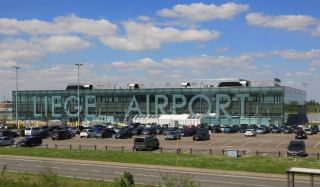More than 42 million tonnes of freight were transported via Walloon navigable waterways last year. A level which had not been achieved for six years. This also means that there were 2 million fewer trucks on the roads.
The flow of freight transported along the 451 kilometres of navigable waterways represents a major aspect of the Walloon logistics transport chain.
"It is an indisputable asset for logistics since, located at a European crossroads, the Walloon network provides access to the main seaports of northern Europe and the navigable waterways of France, Netherlands, Germany, and, via it, Eastern Europe", explain Wallonia Public Service's managers for Mobility and Waterways.
The highest level in 6 years
In order to encourage this method of transport, the €75 million investment in the frame of the "2016-2019 Infrastructures Plan" will help to modernise and improve the infrastructure of the Walloon waterways network. For example, the new Perex 4.0 centre, which, thanks to new technologies, will benefit from the resources needed to manage the hydraulic infrastructures of the waterways network in an integrated manner.
The sector which was in crisis following the gradual disappearance of steel industry products, is already feeling the first effects of the efforts made. According to the statistics collected by the administration, "in 2017, the total tonnage of freight transported by boat exceeded 42 million tonnes, a level that had not be reached for 6 years."
New markets
In its report, the administration notes a 6.76 % increase in freight transport by boat compared to 2016. This growth can be explained mainly by a diversification of the type of freight transported on waterways.
The metal working industry, which, historically, had always been a large-scale user of navigable waterways, represented 25% of transport in 2001 and only 9.18% in 2017. This reduction can be explained mainly "by the closure of the last Walloon hot phase."
That is why the freight navigation sector has turned to new markets. These include construction materials, agricultural products, which have increased significantly, and also oil and chemical products.
An impact on the road network
Freight transport by waterways has had a significant impact on reducing the number of trucks on the roads. According to the Walloon administration, "the tonnage transported by boat in 2017 is equivalent to that transported by more than 2 million trucks, namely the equivalent of a line of trucks in both directions from Liege to Tournai every day of the year!"
Furthermore, a new "Investment Plan", launched on Wednesday 17 January by the Walloon Government, will enable new technical interventions on Walloon waterways. The €100 million invested will double the resources needed to dredge the waterways and will enable the gauge upgrade and renovation of Walloon structures.
These resources are also implemented to achieve the goals of "Vision FAST – mobilité 2030", which aims to reduce congestion on Walloon roads and, among other things, check pollution, accessibility difficulties, etc.







